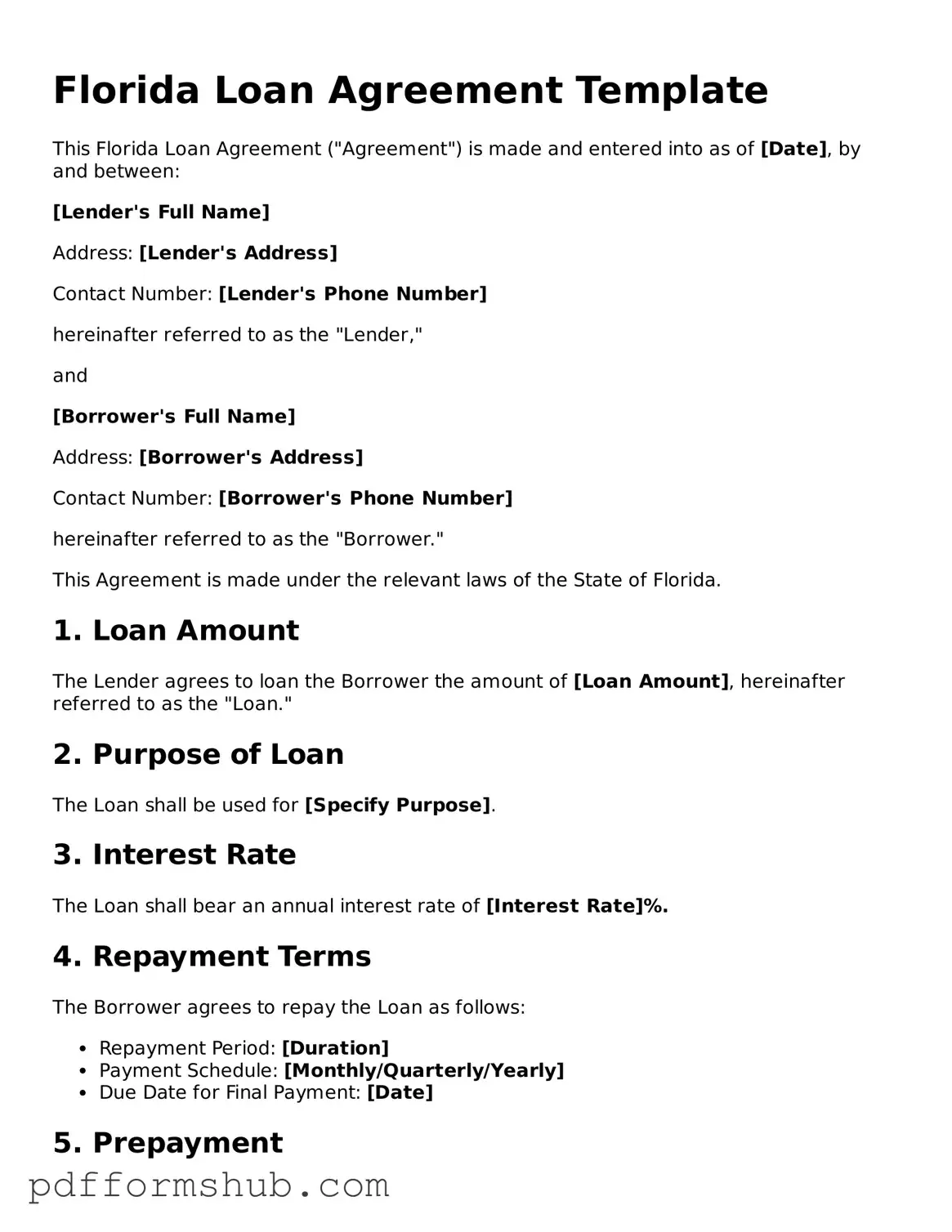Attorney-Verified Loan Agreement Form for Florida State
A Florida Loan Agreement form is a legal document that outlines the terms and conditions under which a borrower receives funds from a lender. This form serves to protect both parties by clearly stating the repayment schedule, interest rates, and any collateral involved. Understanding this agreement is crucial for ensuring a smooth borrowing process.
Ready to take the next step? Fill out the Florida Loan Agreement form by clicking the button below.
Customize Form
